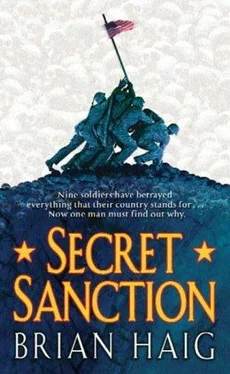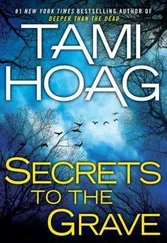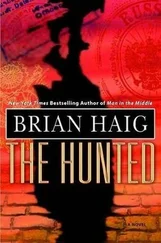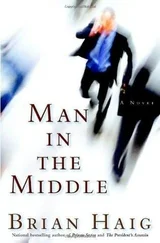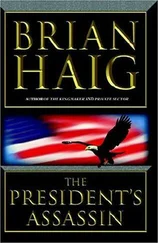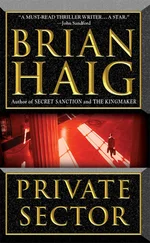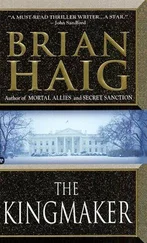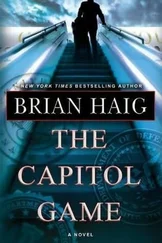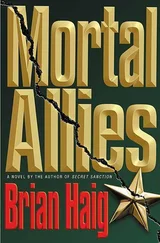Brian Haig - Secret sanction
Здесь есть возможность читать онлайн «Brian Haig - Secret sanction» весь текст электронной книги совершенно бесплатно (целиком полную версию без сокращений). В некоторых случаях можно слушать аудио, скачать через торрент в формате fb2 и присутствует краткое содержание. Жанр: Полицейский детектив, на английском языке. Описание произведения, (предисловие) а так же отзывы посетителей доступны на портале библиотеки ЛибКат.
- Название:Secret sanction
- Автор:
- Жанр:
- Год:неизвестен
- ISBN:нет данных
- Рейтинг книги:5 / 5. Голосов: 1
-
Избранное:Добавить в избранное
- Отзывы:
-
Ваша оценка:
- 100
- 1
- 2
- 3
- 4
- 5
Secret sanction: краткое содержание, описание и аннотация
Предлагаем к чтению аннотацию, описание, краткое содержание или предисловие (зависит от того, что написал сам автор книги «Secret sanction»). Если вы не нашли необходимую информацию о книге — напишите в комментариях, мы постараемся отыскать её.
Secret sanction — читать онлайн бесплатно полную книгу (весь текст) целиком
Ниже представлен текст книги, разбитый по страницам. Система сохранения места последней прочитанной страницы, позволяет с удобством читать онлайн бесплатно книгу «Secret sanction», без необходимости каждый раз заново искать на чём Вы остановились. Поставьте закладку, и сможете в любой момент перейти на страницу, на которой закончили чтение.
Интервал:
Закладка:
We took a left at the end of the hallway, and you knew by the way our footsteps echoed that we’d just entered a very large room. The doctor reached over and flipped a switch. Ten long fluorescent bulbs flickered, and crackled and popped, then finally illuminated everything.
A lot of thought had gone into the arrangement that stretched before us. Thirty-five nude bodies were neatly arrayed in four long columns. Somebody had gone to the trouble of placing props behind the backs of the corpses, so that they all sat up, perfectly erect. It looked ghastly and made it impossible to ignore their faces, although there were a few who were missing faces, or only had parts of them. We all froze in our tracks and there was the sound of a few deep gasps.
A perfectly prone body can still be an impersonal object, but a body that sits up and stares at you, almost as if it has been resurrected-that’s damned impossible to ignore. The first of us to recover was Dr. Simon McAbee, our friendly pathologist, who rushed forward with his doctor’s bag and a savory gleam in his eyes. He began strolling around like a cavorting housewife in a grocery store meat selection, squeezing this one, prodding that one, trying to decide which was the choicest cut.
Delbert and Morrow fell in behind me as I began walking the columns, pausing at each body for only a few seconds, no longer than it took to determine what specific trauma caused the death. The bodies had been cleansed, which made it fairly easy to interpret the wounds. I couldn’t be absolutely certain in every case, but what I saw generally met my most dismal expectations.
Some of the corpses were horribly mangled, but it seemed every single one had been shot in the head. One corpse, though, had no head at all, just an ugly, hacked-on stump at the bottom of the neck. Some of the head entry wounds were from the back or the front, but most were from the side. The entry holes were small, about the size that would be made by a 5.56mm round, which just happens to be the size bullet fired by an M16 rifle, which just happens to be the standard-issue weapon for American troops. The exit holes were large. This, again, is characteristic of the M16 bullet, which tends to tumble once it strikes hard objects, like skulls and bone, collecting a lot of tissue as it speeds through the body, making an ever-widening path and a big, ghastly exit wound.
At least half the bodies were so seriously mangled, and the nature of the wounds so severe, that they had obviously been hit by mines. It was the kind of mine, though, that intrigued me. American troops are issued something called a claymore, which is an upright mine that sits above the surface, planted on a pair of tiny metal tripods. The great virtue of the claymore is that it is a directional mine. It has a rectangular, curved shape, and the explosives are packed into the concave hollow, while the outward half is packed with thousands of tiny pellets that are propelled forward with great force. It’s a highly favored weapon in ambushes. The mines are triggered by an electric pulse, and the technique of choice is to connect several of these nasty little things together with commo wire into what is called a daisy chain. That way, once the electric charge is triggered, all the mines appear to go off at once. The time it takes for the electric charge to travel the wire actually means the explosions are not precisely simultaneous-there’s a few milliseconds of lag-but, as soldiers are wont to say, it’s close enough for government work.
The half of the bodies that were badly mangled had lots of little pellet holes. Mysteriously, though, all of the wounds seemed to be somewhere in the back, which implied several possibilities, most of which were damned ugly.
After the first pass, Delbert, Morrow, and I gathered in a small knot in the back corner and whispered among ourselves. Dr. McAbee and Dr. Whatever-osovich continued to traipse around and pick at pieces of wounded flesh. The Serb was obviously a pathologist, and the two of them were rubbing chins and chatting amicably, just having a gay old time.
“What do you think?” I asked Delbert and Morrow, waiting to see who would answer first.
Morrow quickly said, “It’s sobering.”
“Very sobering,” Delbert quickly one-upped her.
And indeed it was sobering. Both Delbert and Morrow had been through morgues before, so these were certainly not the first corpses they’d seen. Still, it’s a very breathtaking thing to see thirty-five of them all at once. I had the advantage of having been to war once or twice, but I’ll admit that the sight of lots of dead bodies still taxes my soul in strange ways.
“It doesn’t look good, does it?” Delbert asked.
“No,” I grimly admitted. “We won’t know for sure till McAbee’s done, but I’d guess most of the damage was done with M16s and claymores. There was a machine gun or two involved as well, but I can’t even hazard a guess what kind.”
“Some of them were little more than boys,” Morrow said.
“Right.”
“A few were just sprouting pubic hair,” she continued, not as a matter of prurience, but because it exacerbated the seriousness of this. Killing grown men was one thing. Killing teenage boys took it to another level.
On my first sweep through, I had deliberately ignored the faces. I had focused only on the wounds, because I didn’t want my reason clouded by emotion. Now it was time to go back and look at each corpse anew; to think of them as human beings rather than as butchered slabs of meat filled with clues. Perhaps some of these corpses had done some very nasty things to the Albanians they were herding out of Kosovo; still, I had to remind myself that they were also human beings. Besides, at issue here was not what crimes some, or maybe all, of these men had committed, but what crimes might have been done to them. So I spent another twenty minutes wandering through and trying to order my ever-pliant conscience.
Dr. McAbee had collected a number of specimens and was now taking photographs of each corpse. He worked efficiently and professionally and completed his work even before I was done.
He finally walked over to me. “It doesn’t look good, Counselor.”
“I can see that.”
“Our host gave me a collection of projectiles removed from the corpses.”
“Did you personally remove any?”
“A few.”
“And?”
“The bullets are 5.56. The pellets appear to be claymore.”
“So all the wounds were made by American weapons?”
“With thirty-five bodies, it would take three X-ray machines and a team of three assistants a full week to prove that beyond any shadow of a doubt.”
“But is that your general impression?” I asked him.
His bulgy eyes fixed mine, and he seemed to sigh. “Every wound I saw appeared to come from an American weapon.”
“What about the head wounds?”
“Most were shot from a distance of less than two feet. These fools washed the bodies, but I still found some gunpowder samples in their hair.”
“And how would you guess that happened?”
“That’s obvious, isn’t it? Someone walked through and made sure there were no survivors.”
“Nothing’s obvious,” I chided. “Be careful about assumptions.”
“Of course, you’re right,” he said, although we both knew that it still appeared obvious.
“Did you tell that Serb doctor to maintain these bodies until we’re done?” I asked him.
“I did. But he said he can’t.”
“Why not?”
“Milosevic has ordered a large state procession where the families of the dead are to be honored for their sacrifices. After the ceremony, the bodies are to be returned to their families for funerals.”
“Then the Serbs will create a vast problem for us and themselves.”
Читать дальшеИнтервал:
Закладка:
Похожие книги на «Secret sanction»
Представляем Вашему вниманию похожие книги на «Secret sanction» списком для выбора. Мы отобрали схожую по названию и смыслу литературу в надежде предоставить читателям больше вариантов отыскать новые, интересные, ещё непрочитанные произведения.
Обсуждение, отзывы о книге «Secret sanction» и просто собственные мнения читателей. Оставьте ваши комментарии, напишите, что Вы думаете о произведении, его смысле или главных героях. Укажите что конкретно понравилось, а что нет, и почему Вы так считаете.
